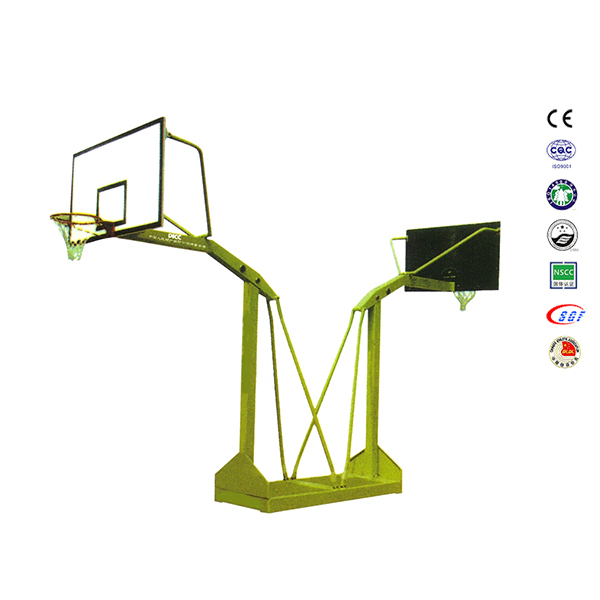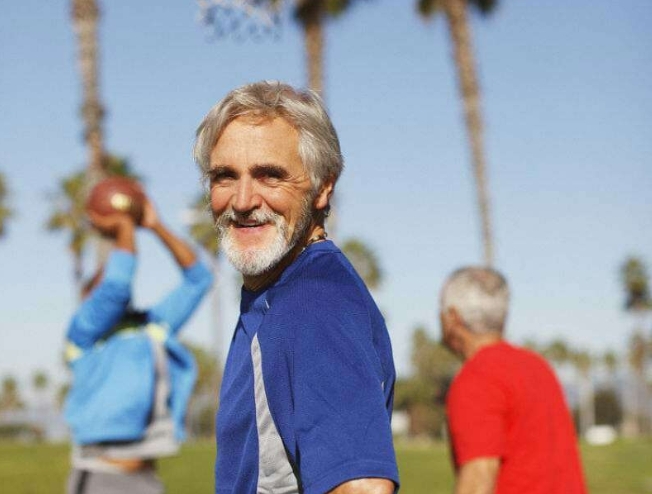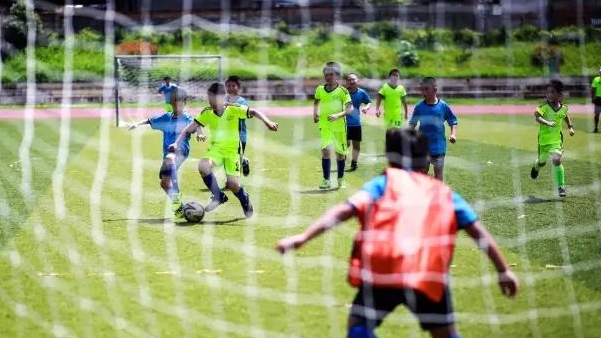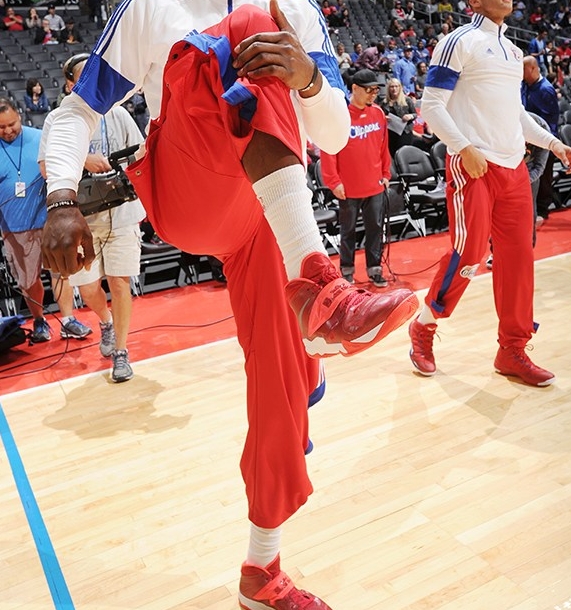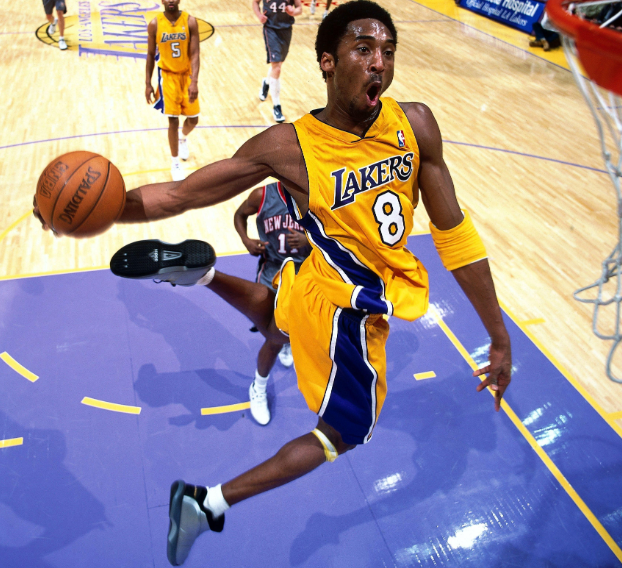Product
How to jump higher basketball training
Basic Info
2. You can practice tiptoeing at home every day, a few dozen as a group, and do a few groups every day to lengthen the leg tendons.
3. Sit-ups can train waist strength. Waist and abdominal strength is also important when jumping.
4. When jumping, try to squeeze out space and jump. It will be much higher than jumping from the spot or carrying someone.
5. Warm up fully before the game. It will be better to open up the ligaments and prevent injuries.
1. Preface
To get straight to the point, if you are an ordinary teenager like me who loves basketball, the reality is that it is basically impossible to train to bounce like various gods. A vertical height of up to 110cm often requires a lot of long and scientific training, as well as natural talent.However, even if you don't have much talent, it's no problem to spend two months improving your 20cm bounce under scientific training (pure spare time, no skipping classes, enthusiasts still prioritize our staff!). That's through training in jumping techniques.
When I first came into contact with bounce training, I found this instructional video: Air Alert
This movie can be easily found online now. I followed the method here and trained for 5 days a week with 5 simple movements (all without weight): half squat jump (20 in groups, 4 groups), heel lift (100), step jump (20 in groups, 4 groups), vertical jump (100, locking the knee), toe jump (100, locking the knee, using the forefoot to exert force on the ankle). I successfully improved my jumping by 20cm for more than two months (about 10 weeks).
This is not some magic or martial arts secret, and to achieve such an effect, it is also a prerequisite: you have never received training in jumping skills. These movements can improve your leg strength in a sense, but the most important thing is your jumping technique (power technique). Below, I will provide a detailed analysis based on my own experience.
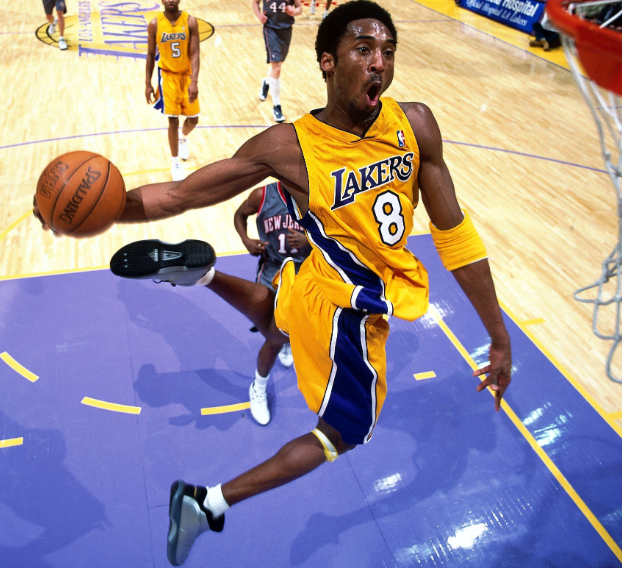
Kobe soars into the air and dunks on the blue
2. Bounce Growth Principle
First of all, everyone needs to know that jumping is a very complex action. Generally speaking, some older "veterans" will attribute jumping to: strength * speed=jumping, which is actually much more complex.The process of jumping is a very scientific transmission of force. The leg exerts force on the ground, which is then transmitted back through almost all important muscle groups in the body, including the feet, calves, buttocks, core, and upper limbs. Multiple muscle groups work together to exert force, requiring good coordination and balance, as well as the simultaneous action of strength, speed, and explosive power, in order to have good jumping.
According to my post analysis (based on extensive research and experiments), training such as Air Alert can effectively improve your jumping skills. By separating the key steps of jumping, you can gradually memorize the power transmission of vertical jumping movements through muscles and nerves, and train your body muscles to become familiar with jumping movements (the technique of exerting force). Due to the dispersion of movements, it can also effectively stimulate you to use some small muscle groups that are not commonly used in daily exercise or life, such as knee locking vertical jumps and toe jumps, which train the coordinated force of your small muscle groups.
Even if you exercise regularly and think you can run and jump (not many people admit that they can't run and jump), you may not be able to control the timing of your power when you actually jump with full force. This training almost perfectly solves this problem (limited to vertical jumping).
If you haven't undergone such training, congratulations, you have a good chance of getting an additional 20cm of bounce in the next 2 months.
But I also want to remind everyone here that after training, you must have enough rest. For example, I practiced every day for 7 days a week because I was eager to achieve success at the beginning! I was so tired that I dozed off in class in the morning, but it had no effect at all. Instead, during the period when I almost gave up, I tried jumping and found that it had increased a lot! As demonstrated in the Air alert, your bounce growth will follow a curve that first decreases for a while and then rebounds strongly! Completely in line with the growth law of muscle strength. You need to give your muscles enough time to rest and grow in order to stimulate them to improve at a higher starting point.
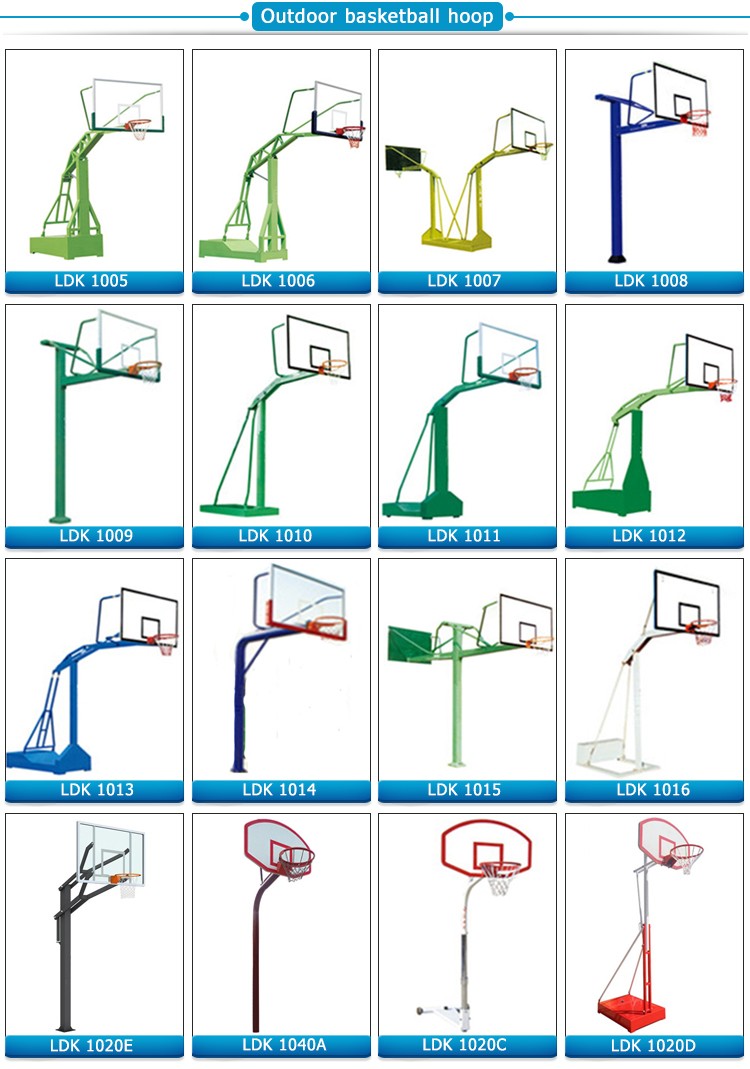
Is this the limit?
In high school, by improving my jumping skills in this way, I won all the high jump championships at the school sports meet, which directly led to me hanging on various baseball fields in Shanghai with both hands all year round (falling and breaking my bones once... bear the black history of the child). At that time, I was indeed at a stage where I thought I was jumping very high, until I followed the school team and met more experts as I grew older, and only then did I realize that I was a frog from the bottom of a well.I still can't dunk, every time I grab the frame, it feels like I'm getting very close to the dunk, but the last half of my palm just can't overcome it. I am still trying to practice according to the information in the Air alert, but the growth has clearly stopped. I also consulted a lot of information and conducted experiments on myself, and asked many people. One senior even recommended to me the training method that their previous coach used to make them jump from the second floor... (Now I know that this method is theoretically correct, which will be explained below) I have discovered another day, which is strength training.
Before the beginning of college, I was still a fitness enthusiast, practicing movements learned in videos through dumbbells all year round (now I realize it's just random practice), without any organization. And there is also a misconception that 90% of people have: they can jump higher with a lighter weight! Now it seems that this statement has truly misled many people. Because of this understanding, I don't dare to engage in a lot of weightlifting training, especially squats, and I'm particularly afraid of training too heavy. This doubt was dispelled when I learned that Neptune weighed a whopping 90 kilograms (he weighed 175).
A person is like a spring, being able to absorb more force means releasing more force. If you want to release the force that can throw your own weight more than 1 meter away, at least you should be able to absorb that much. So, as I said before, the "jumping off a building" training method is reasonable (but too dangerous to do). If your leg muscles can easily absorb these impact forces, then similarly, you should also be able to release them. An alternative method is to squat deeply!
In jumping movements, the most powerful muscle is the quadriceps, followed by the core strength muscle group (the muscle group around the person's center of gravity), which can stimulate both at the same time. There is no better movement than squats! There are actually many types of squats: squat (or half squat): the smallest squat movement, which actually has the best effect on jumping, because it imitates the power movement of jumping on the sports field very well (imagine who dunks by squatting their buttocks to the ground and jumping?). However, it is also the most knee damaging sport, and athletes without a good foundation should not try it. Squatting may give you good jumping skills and also have a good chance of ruining your sports career in the morning.
Squat (squatting to the point where the thighs are parallel to the ground): This should be an economical move, with a very high coefficient when the movement is standardized. Without chest, with a straight back and toes not exceeding the knee (slightly above the knee is better), these are the basic squat postures, and you should be able to easily obtain this information from various channels now. How much squatting is acceptable for a basketball player? It's simple, twice the weight. For professional athletes, it is a mandatory standard (except for those who are overweight), such as Guo Ailun who completed 13 squats with a weight of 100KG. For someone weighing 85kg, completing a deep squat of 170kg should be no problem. But for amateur enthusiasts like you, this is a great goal that is practical and feasible!

Official Nba Hydraulic Basketball Hoop
I recommend two very useful actions that I have personally used:
10 * 10 full squat (choose lighter weight to make 10 groups in total), deeper than deep squat until the thighs and calves fit together. This movement is very good for beginners to lay a foundation because its power trajectory is longer and it uses more muscle groups, which is definitely a challenge for endurance! It can lay a solid foundation for you to increase weight in the future. Practical experience has taught me that squatting has a very good stimulating effect on the gluteal muscles, and the exertion of the gluteus maximus muscle is very useful for many people's pursuit of the "fastest first step". We often see that many NBA players have very large buttocks, which is one of the reasons (either due to good genes).Bulgaria squat (10-12, four sets), the above picture is the reason why I initially chose this action, and I saw Brooks also doing it. After actual training, I really feel good. The quadriceps exert force alone, and the training for the core and balance is very good. You will know the weight Brooks is holding once you try it, and doing this action is still impressive.
After about two months of weight training, my jumping has indeed decreased again, hehe! I have already investigated it thoroughly this time, and it is completely normal. After experiencing strength reserve training, it is like a spring being pressed to its lowest point, unable to release energy, and only after returning to its original state does it have elasticity. Many people feel ineffective after training and give up quickly. In fact, you are just laying the foundation. As long as you add skill training (Air Alert), some sprinting runs (30 meter full sprint runs), and flexibility training afterwards, your jumping will quickly overcome the bottleneck! So, the strength reserve period and skill training period must be separated!
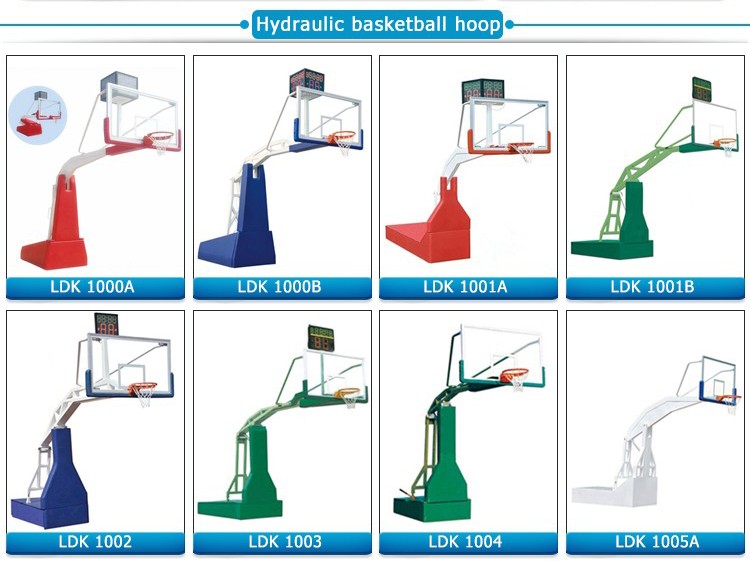
Electric Hydraulic Basketball Stand
4. The final trick (beginners should use it with caution)
If you have completed the first few stages of training and done it thoroughly enough, then in a sense, you have achieved a good reserve of strength. Core strength and leg strength are sufficient. Next, besides using Air Alert again, there are actually better ways to release your reserve strength. I want to tell you about the last two golden actions I experienced here.At this point, some players may ask why there hasn't been any mention of explosive power? Firstly, we confirm that explosive power contributes significantly to jumping, and it may directly determine whether you are practicing 'dead power' or 'living power'. However, due to the physical fitness requirements of explosive power training, practicing before laying a solid foundation in strength has an 80% chance of directly ruining your sports career.
Firstly, let's briefly explain what explosive power training is. There are many misconceptions that doing a strength training movement quickly is explosive power training, such as flying a squat or a bench press. This is a big misconception.
The training of explosive power has its own special combination of movements, which exercise the reactions of muscles and nerves, as well as the skills of multiple muscle groups working together to exert force. The most commonly used ones should be high flips and high grabs. You rarely see these two movements in domestic gyms
The vast majority of people who do it are also wrong, because it's really not easy.
The grip must be shoulder width locked, and the bar should be lifted in a hard pull position. Use all your strength to push and stretch, shrugged, and make sure to flip your elbows. Finally, squat forward and stand up. It's not pulled up by hand, it's a series of synergistic effects, and the transmission of force in the middle cannot be interrupted.
It is recommended that players do their homework thoroughly, read various tutorials, and try again before choosing to practice high flips! Another seemingly simple action is actually quite clever, which is to lift oneself up. You don't need to carry any weight, jump with your maximum strength (without running), and find a target object (such as a backboard). In the initial stage, you can choose a training method of 10-15 in groups and 4-5 in groups. It can be gradually strengthened in the future. This method is very direct and can help your body get used to the reaction under extreme force.
Seemingly simple, but in fact, this training is very dangerous and exhausting! Because every time you need to jump with all your strength. At the end of fatigue, you may still choose to continue jumping, but it may have already exceeded the review. Imagine if you can't move deeply, you won't be able to stand up, but if you can't jump, you can still complete the jumping action, just your feet can't land. This kind of training is likely to first fatigue and damage your nerves. Muscle fatigue can be restored, while neurological fatigue is more difficult.
Furthermore, there is an injury to my knee (buy a good pair of shoes first!). After trying to train for a week, I also felt discomfort in my knee. You should know that before trying to lift myself, I had already crouched down to about 170 kilograms, so my strength reserve should be sufficient (or too weak). Therefore, it is necessary to warm up and rest adequately for rehabilitation! Otherwise, all previous efforts will be in vain.
To be honest, I didn't put in as much effort into the last two actions as before, maybe because they were too tiring or too difficult, otherwise my skills would have far exceeded what I am now!
In short, this is my little experience that I hope will be useful to those in need.

Cheap basketball hoops for sale
5. Finally
Although I finally managed to dunk, I have never succeeded in actual combat. However, this is my regret and also the beauty of my youth. I admire those basketball players. After practicing, I realize how tired and boring the daily training can be. I feel that I have invested enough, but there are still many constraints, which may be the helplessness of amateur enthusiasts.I often think that if I were to enter junior high school, perhaps I would choose to take the path of basketball. Although it is extremely difficult, maybe I will have another achievement However, in other words, today I would like to share my experience of practicing jumping. I hope those who, like me, still hold onto their dreams can persevere, avoid detours, and use my little experience to wish you all the success of your dreams.
More LDK basketball stand recommendations:For more LDK basketball stands, please click:
LDK sports equipment manufacturer's promotion is in progress: Click to contact us now






